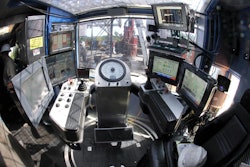W
H
IT
EP
A
PE
R
What is the Value
of Real-Time Data?
www.iqms.com 1.866.367.3772 [email protected]
IQMS, the IQMS logo and EnterpriseIQ are registered trademarks of IQMS. All other company names are trademarks of their respective owners. The information herein is subject to change without notice. © 2015 IQMS. All rights reserved.
What is the Value of Real-Time Data?
What do you consider real-time information? For some manufacturers, accurate data
can only be acquired when a shift ends and the production reports are logged or the
data from the shop floor is uploaded, resulting in an unfortunate up to eight hour “real-
time” reality. For others, the real-time information range is shorter, spanning between
four to six hours, depending on the design and technology limitations of their reporting
software.
Today’s competitive manufacturers need to ask themselves, “Why is that an acceptable
margin?” The answer is: It’s not! When you pull information from your shop floor and
back office, your reports should be run against live data, not data that is delayed. Too
many manufacturers miss out on critical decision-making pieces of the puzzle because
of a lack of timely production details.
Is real-time data all that important? It is not like you are pulling money from an ATM
or booking a flight. This whitepaper discusses the importance of actual data and
demonstrates how a lack of real-time information can cause crippling effects throughout
your entire enterprise. Read on to learn how live data can help you reduce the loss of
time, resources and ultimately money from your bottom line.
How the Internet of Things is changing the concept of real-time.
Real-time of the past is not the real-time of today. Out on the shop floor, your robots and
work centers are gathering tremendous amounts of data. Production details regarding
performance and maintenance are being tracked and in-depth information about the
products you are making is being gathered. In the past, this data was trapped within
your high value production equipment because of a lack of connectivity back to a central
location.
Today, thanks to the Internet of Things (IoT) movement, sensors and programmable
logic controllers (PLCs) are able to capture that data and communicate it, through highly
connected IP networks, back to a central enterprise-based system (such as ERP and MES
solutions) in real time. This machine to machine (M2M) technology allows manufacturers
to finally access critical data in the here and now for thorough analysis in modules such
as Statistical Process Control (SPC) or through powerful user-defined graphs, gages and
reports.
Then why am I experiencing a data delay?
Armed with the power of the Internet of Things, what do you now consider real-time
information? Your answer should be: Instantaneous. But that is not the case with some
ERP vendors who claim to provide “real-time” information. The best real-time data these
ERP vendors can offer is hours later! There are a couple of reasons why your reporting
information is delayed. The first is the ERP vendor offers a third-party, interfaced
www.iqms.com 1.866.367.3772 [email protected]
IQMS, the IQMS logo and EnterpriseIQ are registered trademarks of IQMS. All other company names are trademarks of their respective owners. The information herein is subject to change without notice. © 2015 IQMS. All rights reserved.
together reporting solution. Not designed as part of a single system, the programs
are not integrated or comprehensive, resulting in data that is not only delayed, but also
potentially not even complete.
The other reason is batch transfers due to technology limitations. For example, some
Cloud ERP software does not allow user defined reports, queries or KPIs to report
against live data. Instead, these systems rely on a data warehouse that is only updated
hours later in batches.
A better solution:
So what is the answer to this information delay? The solution is an Online Transaction
Processing (OLTP) system. OLTP efficiently facilitates high transaction-orientated
applications, such as ERP software, for immediate feedback and concurrency. The very
nature of OLTP is characterized by high performance data transactions and processing,
much of which can happen in near real-time (sub-seconds) in order to provide accurate
data for many users.
By capitalizing on OLTP capabilities within a database such as Oracle, accurate real-time
data is provided to all departments within an organization. This allows for immediate
response to alerts, trends and opportunities which would otherwise be missed in non
real-time systems. Without this capability, users would not be able to respond to quickly
changing needs or requirements throughout the enterprise, which can result in costly
rejects or rework.
Wave good-bye to your most painful manufacturing challenges:
Can you imagine if something goes wrong on your shop floor and no one is made aware
for several hours? The pitfalls of operating with even slightly outdated information are
great. Let’s consider some examples of common challenges where real-time information
can greatly increase performance and operational efficiency.
Inaccurate scheduling: On the shop floor, you live and die by your
production plan. Many manufacturers survive with dispatch lists
and organize their schedules based on the fixed production time
on the Bill of Material (BOM). This average time only delivers an
estimate as to how long a job is expected to take and the process
of work center juggling scheduling involves a heavy amount of
proprietary knowledge, rough cut capacity charts and often a bit
of prayer.
If you cannot view what is occurring on the shop floor until hours
after it has occurred, how can you properly schedule? For example,
if you are producing an unusual amount of rejects, then your good
products are not coming o the line and you are going to run late,
www.iqms.com 1.866.367.3772 [email protected]
IQMS, the IQMS logo and EnterpriseIQ are registered trademarks of IQMS. All other company names are trademarks of their respective owners. The information herein is subject to change without notice. © 2015 IQMS. All rights reserved.
pushing the next job out. Alternatively, what if you are performing
better than expected, but were not aware, so when the job finishes
early, you have an idle work center because you did not prep the
next job. All of these scenarios could have been avoided if you had
up to date information.
Trending out of specification: One of your work centers is
processing a long running, automated job with no operator.
Because you only receive data every couple of hours, it could be
half way through your first shift before you receive a production
report. You take a look at the data and a quarter of the products
have been rejected! They are not meeting specification. You pull
up the data in your SPC module (provided the enterprise system
is linked and you have that option) and the parts started to trend
out of specification two hours into the run. If only you could have
accessed that data in real time! You would have adjusted much
earlier on. How many tens of thousands of dollars were lost in
corrective actions because your data was old? Add in the expense
of wasted material, rework, lost hours and the cost of your next
job starting late and that old data came at a high price.
Late KPIs: Collecting data is easy. In today’s modern manufacturing
environment, it is virtually everywhere. But getting accurate,
timely, contextual data? That is a bit harder. If you don’t rapidly
transform the data you are gathering into applicable analytics,
you can easily get lost in it. Today, it isn’t so much about big data
as it is the ability to quickly sift through the big data to access
the specific data that you actually need when you need it. Key
Performance Indicators (KPIs) are much more effective when the
information is not delayed. Sure, some reports can be analyzed
later (such as OEE, cost against standard, etc.), but what about
production process rate, part count and actual production time?
How useful are reports if the data is old?
Incorrect inventory: Real-time data can positively influence so
many aspects of inventory control that it is difficult to mention
them all here. For example, real-time information allows employees
to offer accurate capable to promise calculations when quoting a
job or check packing slips and current work orders for inventory
availability when placing a sales order. With real-time inventory
requirements gathered from forecasted work orders, received
shipments and current WIP, a more detailed, accurate picture of
MRP is gained to create accurate purchase orders. Supply chain
control takes on a whole new meaning with up to the second (or
sub-second) actual data.
www.iqms.com 1.866.367.3772 [email protected]
IQMS, the IQMS logo and EnterpriseIQ are registered trademarks of IQMS. All other company names are trademarks of their respective owners. The information herein is subject to change without notice. © 2015 IQMS. All rights reserved.
Unplanned downtime: The saying goes that minutes cost millions
when work centers go down. Controlling costs on the shop
floor begins with work center reliability and continuous uptime.
Unplanned or unexpected downtime can be incredibly expensive,
but with the ability to actively monitor and diagnose what is
happening with each work center in real time, you can react more
quickly and ensure that you maximize the output of your assets.
I think the point has been made - Getting your information, data
and reports in real time is crucial to the growth and success of
your manufacturing facility. It is time to stop reacting and begin
proactively making decisions about what is occurring on your
shop floor. When selecting a new ERP solution, don’t settle for a less than real-time
existence. Search out the provider who can offer immediate answers to the challenges
that plague you the most.
About IQMS
Since 1989, IQMS has been designing and developing ERP software for the repetitive,
process and discrete manufacturing industries. Today, IQMS provides a comprehensive
real-time MES and manufacturing ERP software solution to the automotive, medical,
packing, consumer goods and other manufacturing markets. The innovative, single-
database enterprise software solution, EnterpriseIQ, offers a scalable system designed
to adeptly grow with the client and complete business functionality, including
accounting, quality control, supply chain, CRM and eBusiness. With offices across North
America, Europe and Asia, IQMS serves manufacturers around the world.
If you would like to learn more about IQMS’ comprehensive ERP solution, please visit www.iqms.com.
!
What is the Value of Real-Time Data?
Is real-time data all that important? It is not like you are pulling money from an ATM or booking a flight. This whitepaper discusses the importance of actual data and demonstrates how a lack of real-time information can cause crippling effects throughout your entire enterprise. Download the white paper today to learn how live data can help you reduce the loss of time, resources and ultimately money from your bottom line.
Latest in Home
ABB to Invest $110 Million in 4 U.S. Plants
September 17, 2025
Nvidia CEO Huang Says He's Disappointed by China Chip Curbs
September 17, 2025






















